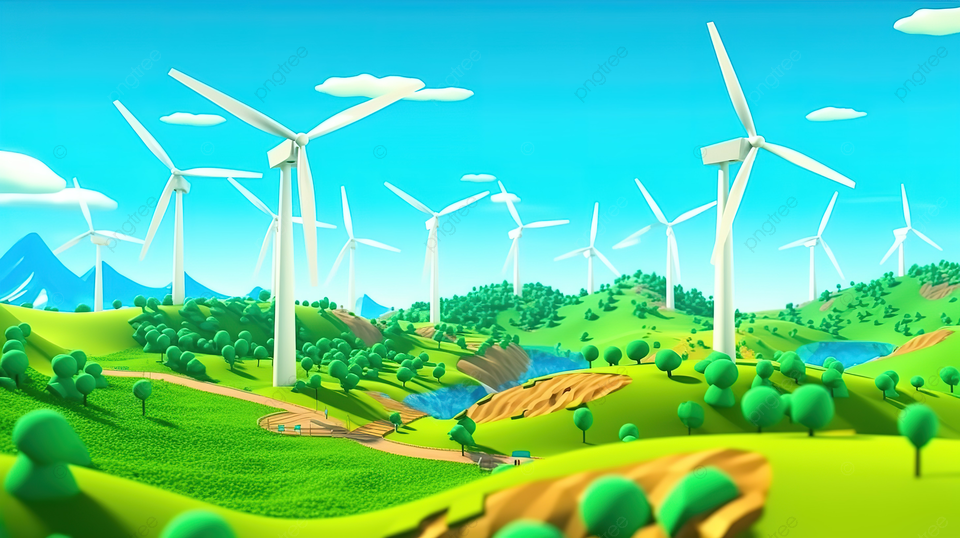Clean Energy Prediction using SVM
 Aditya Tomar
Aditya TomarTable of contents
- How Support Vector Machines Can Predict the Timeline of Clean Energy Adoption
- Introduction:
- What Are Support Vector Machines?
- The Importance of Predicting Clean Energy Adoption Timelines
- How SVMs Can Help in Predicting Clean Energy Timelines
- Case Study: Predicting Solar Energy Adoption
- Brief:
- Challenges and Considerations:
- Conclusion:

How Support Vector Machines Can Predict the Timeline of Clean Energy Adoption
Introduction:
Clean energy is more than just a buzzword—it's a critical component of our future. As the world grapples with climate change, the transition to clean energy sources like wind, solar, and hydro is not just desirable but necessary. However, predicting when and how quickly this transition will happen is a complex challenge. This is where machine learning, specifically Support Vector Machines (SVMs), can play a crucial role.
Support Vector Machines are a powerful tool in the machine learning toolkit, known for their ability to perform well on a variety of classification and regression tasks. In this article, we’ll explore how SVMs can be leveraged to predict the timeline of clean energy adoption, ensuring that policymakers, investors, and stakeholders can make informed decisions.
What Are Support Vector Machines?
Support Vector Machines are supervised learning models used for classification, regression, and outlier detection. They are particularly well-suited for high-dimensional data and are known for their robustness and accuracy in predicting outcomes based on the given input data.
The key concept behind SVMs is the idea of finding the hyperplane that best separates the data into different classes. For regression tasks, which are more relevant to predicting timelines, SVMs work by finding a line or curve that best fits the data points while minimizing the prediction error.
The Importance of Predicting Clean Energy Adoption Timelines
The transition to clean energy is influenced by a myriad of factors including technological advancements, government policies, economic conditions, and societal behavior. Accurately predicting when clean energy will reach critical milestones—such as when renewable energy will constitute a majority of global energy production—is crucial for planning and investment.
How SVMs Can Help in Predicting Clean Energy Timelines
Handling Complex and Non-Linear Data: The adoption of clean energy is influenced by a complex interplay of variables. SVMs excel at handling such non-linear relationships by using kernel functions, which can map input data into higher-dimensional spaces where it is easier to find linear separations. For example, the relationship between government policy changes and renewable energy adoption rates might be non-linear, but an SVM with an appropriate kernel can model this relationship effectively.
Regression Capabilities: While SVMs are often associated with classification tasks, they are equally capable of performing regression, which is essential for predicting timelines. By training an SVM on historical data of clean energy adoption—such as the rate of solar panel installations, wind energy production, or investment in green technologies—it can learn to predict future adoption rates and thus estimate when certain milestones will be reached.
Incorporating Diverse Data Sources: The transition to clean energy depends on various data points, from technological advancements and economic indicators to social trends and policy developments. SVMs can integrate these diverse data sources to create a comprehensive model that predicts the timeline of clean energy adoption with greater accuracy. For instance, an SVM can combine data on government subsidies, consumer behavior, and the declining cost of renewable technologies to predict when clean energy will become the dominant source of power in a particular region.
Robustness to Overfitting: One of the strengths of SVMs is their robustness to overfitting, especially in high-dimensional spaces. Overfitting is a common problem in predictive modeling where the model becomes too tailored to the training data and fails to generalize well to new data. This robustness is crucial when predicting long-term trends like clean energy adoption, where the future may not exactly resemble the past.
Scenario Analysis: SVMs can be used to perform scenario analysis by training models under different assumptions. For example, by creating different models that assume various levels of government intervention, technological breakthroughs, or economic conditions, SVMs can predict a range of possible timelines for clean energy adoption. This provides stakeholders with a spectrum of possibilities, helping them prepare for different future scenarios.
Case Study: Predicting Solar Energy Adoption
Let’s consider a hypothetical case study where an SVM is used to predict the adoption timeline of solar energy in a specific country. The model would be trained on historical data including:
Solar panel installation rates over the past decade.
Government incentives and subsidies for solar energy.
Technological advancements in solar panel efficiency.
Economic indicators such as GDP growth and energy prices.
Public awareness and attitudes toward renewable energy.
Brief:
Using this data, the SVM could predict when solar energy will constitute a significant portion of the country’s energy mix, such as reaching 50% of total energy production. By analyzing the support vectors and the decision boundaries, policymakers can gain insights into the critical factors driving adoption and adjust their strategies accordingly.
Challenges and Considerations:
While SVMs are powerful, they are not without challenges. Choosing the right kernel function, handling large datasets, and ensuring that the model is interpretable are all important considerations. Moreover, the accuracy of predictions depends heavily on the quality and quantity of data available. As clean energy is a rapidly evolving field, keeping models up-to-date with the latest data is crucial.
Conclusion:
Support Vector Machines offer a promising approach to predicting the timeline of clean energy adoption. By handling complex, non-linear relationships and integrating diverse data sources, SVMs can provide accurate and actionable predictions. These predictions are invaluable for guiding investments, shaping policy, and ensuring that the transition to clean energy is both timely and effective.
As the world continues to shift toward sustainable energy sources, the role of machine learning in forecasting and planning will only grow. SVMs, with their flexibility and precision, are well-positioned to lead this charge.
By using SVMs, we can not only predict the future of clean energy but also help accelerate its adoption. This ensures that we are not just reacting to change but actively shaping a sustainable future.
There's My Github Repo Where you can check About , How it works with Clean Energy: https://github.com/ascendantaditya/CleanEnergyPrediction
Subscribe to my newsletter
Read articles from Aditya Tomar directly inside your inbox. Subscribe to the newsletter, and don't miss out.
Written by
